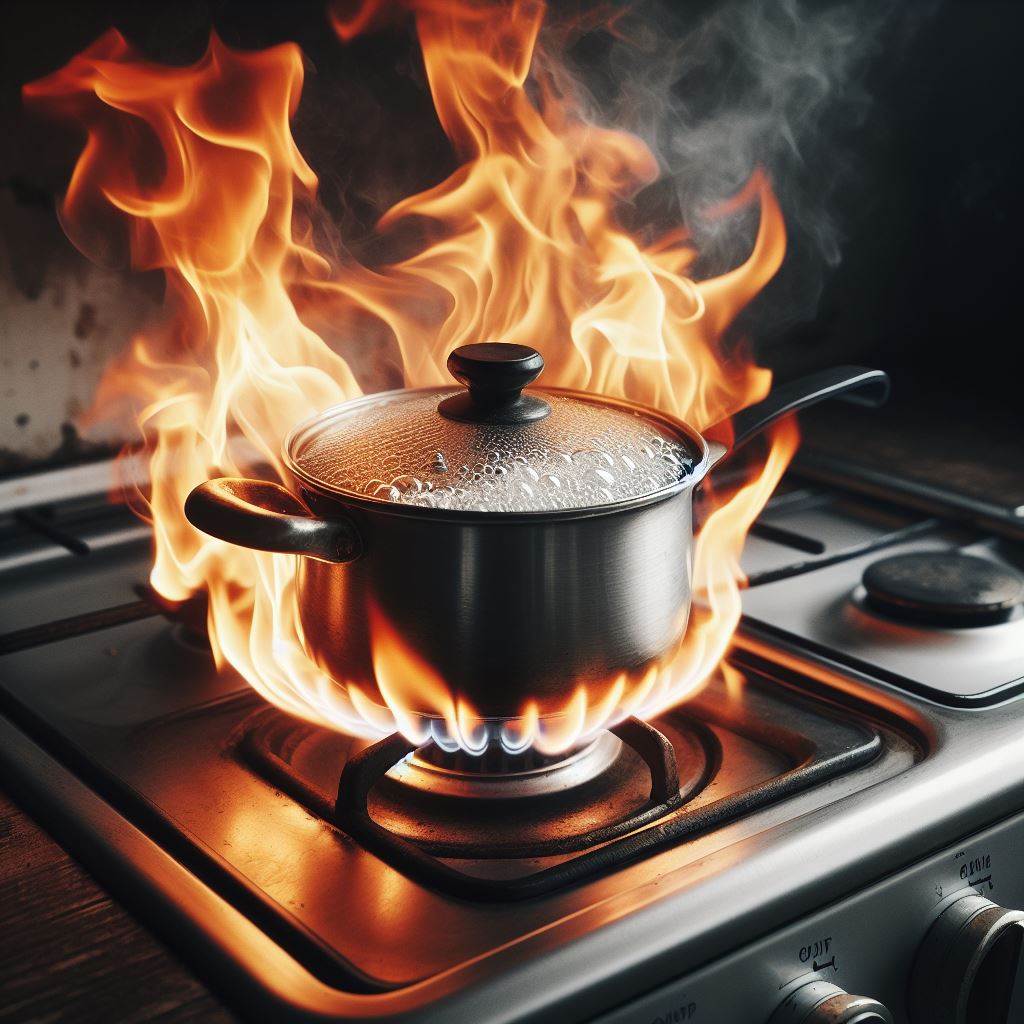Introduction
The kitchen is often considered the heart of the home, where delicious meals are prepared and memories are made. However, it is also a place where potential fire hazards exist, particularly around the stovetop. Stovetop fires can escalate quickly, causing extensive damage and posing serious safety risks. This blog will explore how to avoid stovetop fires, and why having fire safety equipment such as extinguishers or fire blankets nearby is crucial for a safe kitchen environment.
How to Avoid Stovetop Fires
- Stay Attentive and Present
Never Leave Cooking Unattended: The most important rule in preventing stovetop fires is to never leave cooking unattended. If you must leave the kitchen, turn off the burner or ask someone to watch the stove for you.
Avoid Distractions: Stay focused while cooking. Avoid distractions such as phone calls, television, or other activities that might divert your attention. - Keep Your Cooking Area Clear
Clear the Clutter: Keep flammable items like paper towels, dishcloths, wooden utensils, and packaging away from the stovetop. These items can easily catch fire if they come into contact with a hot burner.
Proper Storage: Store oils and other flammable cooking ingredients in a safe place, away from direct heat sources. - Use the Right Equipment
Proper Pan Size: Use pots and pans that match the size of the burner to prevent overheating and spills that can lead to fires.
Secure Handles: Ensure that pot handles are turned inward to avoid accidental knocks and spills. This is especially important if you have children or pets in the kitchen. - Control Heat and Flames
Monitor Heat Levels: Be mindful of the heat level you’re using. High heat increases the risk of oil and grease catching fire. Use medium or low heat whenever possible.
Cover Flammable Oils: When frying or cooking with oil, use a lid or splatter guard to contain any hot oil that might splash and ignite. - Practice Safe Cooking Techniques
Gradual Heating: Heat oil gradually to the desired temperature. Never leave a pan of oil unattended while it is heating.
Avoid Overfilling Pans: Do not overfill pans with oil or other ingredients that can boil over and cause a fire. - Regular Maintenance and Cleaning
Clean Regularly: Grease buildup on the stovetop, hood, and nearby surfaces can easily catch fire. Regularly clean these areas to remove any accumulated grease and food particles.
Check Appliances: Ensure that all cooking appliances are in good working order and that cords are not frayed or damaged.
The Importance of Fire Safety Equipment in the Kitchen
- Quick Response to Emergencies
Fire Extinguishers: A kitchen fire extinguisher should be easily accessible and within reach. It is crucial for quickly putting out small fires before they spread. Familiarize yourself with its operation and ensure it is regularly maintained.
Fire Blankets: Fire blankets can smother small fires by cutting off the oxygen supply. They are particularly useful for grease fires that should not be extinguished with water. - Types of Fire Extinguishers
Class K Extinguishers: Specifically designed for kitchen fires involving grease, oils, and fats. They are the most effective type of extinguisher for stovetop fires.
Multipurpose Extinguishers: These can be used on various types of fires, including electrical and flammable liquids, making them versatile for kitchen use. - Fire Safety Awareness
Education and Training: Educate everyone in your household about the location and proper use of fire safety equipment. Conduct regular drills to ensure everyone knows how to respond in case of a fire.
Emergency Plan: Have a clear emergency plan in place, including evacuation routes and a designated meeting point outside the home. - Regular Inspection and Maintenance
Check Expiry Dates: Fire extinguishers have a shelf life and need to be replaced or serviced periodically. Regularly check the expiration date and ensure it is in working condition.
Inspect Fire Blankets: Ensure that fire blankets are in good condition and stored in an accessible location.
Conclusion
Preventing stovetop fires requires vigilance, proper cooking practices, and a clean, organized kitchen. By staying attentive and using the right equipment, you can significantly reduce the risk of a fire starting in your kitchen. However, even with the best precautions, accidents can happen. This is why it is essential to have fire safety equipment like extinguishers and fire blankets readily available. These tools can make the difference between a minor incident and a major disaster. By preparing and educating yourself and your household, you can create a safer kitchen environment and protect your home and loved ones from the dangers of stovetop fires.

